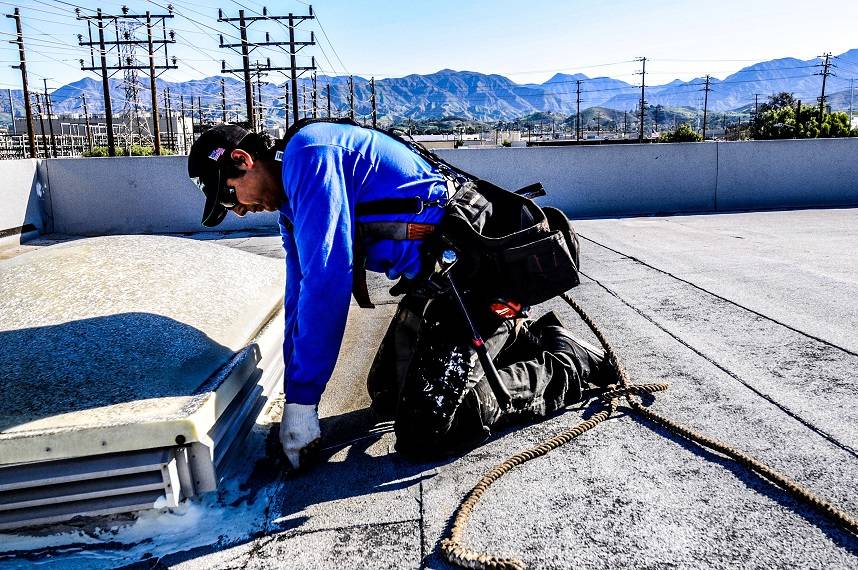Schedule Free Estimate
5 Surprising Reasons Why Commercial Roofers Don’t Work in the Pouring Rain
As the age-old adage goes, “April showers bring May flowers,” but for commercial roofers, rain showers might just bring a temporary hiatus to their work. While the rhythm of rainfall on rooftops can create a calming backdrop, the roofing industry tends to hit pause when the heavens open up. In this article, we delve into the rationale behind the common practice of commercial roofers avoiding work during rainy weather. From safety concerns to the impact on material integrity. We explore five compelling reasons that drive these professionals to postpone their projects when the clouds gather. Join us as we uncover the intricacies of this weather-dependent decision-making process and gain insights into why commercial roofers opt for dry days to ensure the safety of their teams and the longevity of their installations.
1. Slippery Surfaces:
Rain makes roofing surfaces slippery, increasing the risk of accidents and falls. Wet roofs can be hazardous for workers who need secure footing to move around safely and perform tasks effectively. Working on slippery surfaces also increases the likelihood of dropping tools or materials.
2. Roofer Safety Concerns:
Rain can increase the risk of electrical shock when working with power tools or electrical equipment. Wet conditions can also make it challenging to use ladders and other equipment safely. ForPreview (opens in a new tab) the overall well-being of the workers, it’s essential to minimize these risks by avoiding work in rainy conditions.
3. Compromised Quality of Work:
Wet materials, such as roofing membranes and insulation may not adhere properly, compromising the integrity of the installation. Water can also affect the curing process of adhesives and sealants, leading to suboptimal performance and potential leaks in the future.
4. Material Damage:
Rain can damage certain roofing materials. For instance, moisture-sensitive materials like insulation and some types of roofing membranes may not function as intended if they get wet during installation. This can result in the need for costly repairs or replacements, increasing the overall project cost.
5. Reduced Productivity:
Wet conditions make it more challenging for workers to move efficiently and perform tasks quickly. Additionally, rain may require extra time for drying surfaces before certain roofing activities can resume. This reduced productivity can lead to project delays and increased labor costs.
Conclusion:
In summary, commercial roofers prioritize safety, quality of work, and overall project efficiency when deciding whether to work in rainy conditions. While rain can create challenges, avoiding work during wet weather helps ensure the safety of workers and the long-term durability of the roofing system.
Central Roofing Company Headquarters
555 W. 182nd Street
Gardena, CA 90248
310-527-6770

Get A Quote
One of our roofing estimators will gladly meet you to discuss your options and follow up with a free, no-obligation, written estimate.
At Central Roofing Company, we understand that a sturdy and reliable roof is crucial for the success and safety of your commercial property. Our team of highly skilled and trained roofing professionals is committed to delivering exceptional craftsmanship and superior service in every project we undertake.
555 W. 182nd St. Gardena, CA 90248
Ph: 310-527-6770
Our Office Locations:
Our Services
CA license #684960 – Central Roofing, 2024 ©All Rights Reserved | Terms of Use | Privacy Policy | Built by Dymic